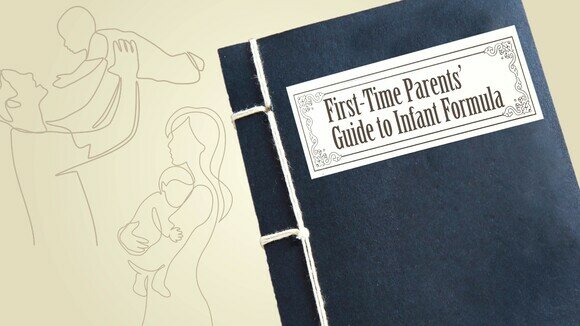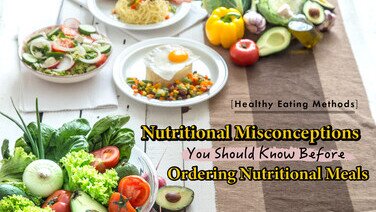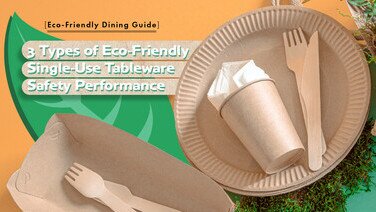Buying infant formula: Which is the right “stage” for my baby?

“When should my baby switch to Stage 2 formula?” “Can my baby continue to consume Stage 1 formula instead of changing to Stage 2 or Stage 3?” Parents may often be puzzled when they hear others talk about infant formula stages. Actually, infant formulas that comply with the standards set by the Codex Alimentarius Commission (CAC) can be divided into 4 stages (Stages 1 – 4).
Stage 1 (infant formula)
It is suitable for newborn babies until 12 months old and is intended as a substitute for breast milk. This formula is specially made to satisfy the nutritional requirements of babies without additional supplements.
Stage 2 (follow-up formula)
It is also known as the “big baby’s formula”. It is intended as a substitute for breast milk or infant formula. It is suitable for babies who are older than 6 months but younger than 36 months as they are starting to ingest solid foods. As they begin to ingest diverse foods, Stage 2 formula can be taken as a liquid diet component but should not be treated as the only source of nutrients.
Stage 3 and Stage 4 (follow-up formulas)
These are suitable for babies aged one or above for acquiring extra nutrients.
It is not difficult to find out the stage of a particular infant formula as it is usually indicated on the container in a larger font size.
When should my baby switch to “big baby’s formula”?
Perhaps many parents are puzzled by this question. Although “big baby’s formula” is a bit different from infant formula in terms of ingredients, there is no need to switch as long as the baby has other food sources to attain adequate nutrition. When the baby is over 1 year old and has a more diversified diet, the formula will become supplementary, and parents may consider switching to cow’s milk until the baby is weaned onto solid foods.
Babies between ages 1 and 2 can take whole milk as they require sufficient fats for development. For those between 2 and 5, parents may consider low-fat milk as long as they have sufficient nutrient intake from solid foods. Children above 5 may switch to skimmed milk as excessive fats and calories may increase the risks of developing obesity and cardiovascular diseases.
Let’s take a look at the ingredients of infant formulas in advertisements!
In the advertisements, we often hear manufacturers claiming that their products contain ingredients such as probiotics, DHA and PhD, which contribute to the development of the brain, eyesight and immune system in babies, as well as improve their bowel movements. However, are these ingredients really capable of providing sufficient nutrients and supporting babies’ normal development as claimed by the manufacturers?
Probiotic
Probiotics are active microorganisms that can improve the balance of intestinal microbiota. Sufficient intake of probiotics is good for health. The more representative probiotics include Lactobacillus, Bifidobacterium and Streptococcus.
Prebiotic
It is claimed that prebiotics (also known as prebiotic fibres) can improve babies’ intestinal health. They are organic substances that cannot be digested in the human body but can stimulate probiotic growth or activity in the intestines. Prebiotics are usually oligosaccharides and soluble dietary fibres.
DHA
DHA, commonly associated with brain development in babies, is the abbreviation for docosahexaenoic acid, which is a type of omega-3 fatty acid (or ω-3 fatty acid or n-3 fatty acid). In our daily diet, our intake of DHA mainly comes from fish, especially oily fish such as salmon, mackerel, herring, anchovies and sweetfish.
AA
Similarly, it is claimed that AA can also help in the development of the brain and nervous system. AA is the abbreviation for arachidonic acid and is a type of omega-6 fatty acid (or ω-6 fatty acid or n-6 fatty acid). Intake of AA in our daily diet mainly comes from animal fats, liver, eggs and fish.
Breast milk naturally contains DHA and AA, but cow’s milk does not. Therefore, DHA and AA are additives in cow’s milk . Besides, healthy babies can produce DHA and AA from the linoleic acid and α-linolenic acid in infant formulas.
Regarding the above ingredients, although there are individual studies indicating that adding these ingredients in infant formula products is beneficial to babies, more research is needed to prove their clinical efficacies and whether they should be added as essential ingredients. According to the current standards of CAC, these ingredients are not essential in infant formula products.
β-Glucan
It is claimed that β-Glucan can enhance babies’ immune systems. β-Glucan is a form of carbohydrates that is mainly composed of the cell walls of fungi, yeast, some bacteria and grains (such as oats and barley). However, according to current findings, there is not enough evidence to prove that β-Glucan can enhance the immune system of babies.
PhD (Phospholipid)
PhD is neither a pizza restaurant nor an academic degree here. It is a type of lipids that is claimed to facilitate the development of babies’ brains. Breast milk and cow’s milk naturally contain PhD. According to infant formula labels, the source of their PhD is from the added "emulsifier (soy lecithin)". Lecithin is actually a common ingredient in foods. Apart from soybeans, eggs, liver, beef and peanuts, vegetables and fruits such as cauliflowers, potatoes, oranges, and apples also contain lecithin. However, there is not enough evidence to prove that PhD is especially beneficial to babies’ intellectual development.
Hydrolyzed formula
Proteins are formed by linking discrete amino acids. Under normal circumstances, human bodies (including babies’) can digest and absorb proteins after ingestion. What are hydrolyzed proteins? Through hydrolysis, long-chain proteins are broken down into shorter proteins or free amino acids. It is claimed that the process helps babies to digest proteins more easily.
Infant formulas containing hydrolyzed proteins are also called hydrolyzed formulas. According to the degree of hydrolysis, they can be classified as "amino acid-based formula", "extensively hydrolyzed formula" or "partially hydrolyzed formula”. The first two are also known as "hypoallergenic infant formula". "Extensively hydrolyzed formula" is generally used as a therapeutic formula for babies who cannot digest protein in cow's milk or are allergic to it. However, there is still not enough evidence to prove that "partially hydrolyzed formula" specifically improves babies’ digestion, absorption and immunity.
In conclusion, according to the standards of CAC and expert opinions, the above-mentioned ingredients are not essential ingredients for infant formulas. Basically, the ingredients of infant formulas are similar across brands, so parents should not be overly concerned and influenced by the product claims and promotions. Instead, parents should check the product labels and consider factors such as their actual need and the supply of products.
What can product labels tell you?
1. Food label and ingredient list
You can check the ingredients such as lactose, vegetable oil and skimmed milk powder emulsifier, etc. in infant formulas to find out if they contain possible allergens for babies.
2. Nutrition information
Most product labels on infant formula containers indicate the nutrients and their amounts per 100g so that parents can find out the type and proportion of nutrients that their babies ingest. In addition, the labels also indicate the nutrients per 100ml so that parents can check whether their babies’ daily intake of nutrients is above or below the standard.
3. Preparation steps and recommended feeding amount
Different manufacturers may use different production processes and methods, so the preparation steps and amount of infant formula to be used are also different. If the infant formula is not prepared according to the instructions, you may end up with undissolved powder or an over-diluted feed. At the same time, most infant formulas have a feeding chart which shows the recommended amount of infant formula and warm water to be used per feeding, and the number of feeding per day, according to the baby’s age (in months). It is best to feed your baby according to the recommended amount, otherwise you may end up with a feed that is too concentrated or diluted, which will lead to 2 problems:
Prolonged intake of concentrated infant formula: Babies will cry due to thirst. Parents may mistakenly think that their babies are still hungry and feed them again, leading to overfeeding;
Prolonged intake of over-diluted infant formula: Babies will feel hungry and cry shortly after feeding, and may suffer from malnutrition in the long run.
(Note: The specific amount for each feeding depends on the needs of individual babies or the instructions of medical practitioners.)
4. Shelf life
Since infant formulas do not decay very easily, consumers can tell their shelf life by referring to the “Best Before” dates printed on sealed infant formula containers. However, once opened, infant formulas can only be kept for 3-4 weeks in general (or according to the instructions on the packaging). Unsealed products that have been left for a long time should be discarded. Therefore, consumers should consider buying products in smaller sizes if the serving is small.
5. Special storage or instructions of use
If a particular infant formula requires special storage methods to maintain its shelf life or requires special instructions of use, these requirements must be specified on the labels.
Infant formula preparation: 7 steps to know
As sterilization is not yet adopted in the existing manufacturing processes of infant formulas, it is necessary to pay extra attention to hygiene and food safety when preparing infant formulas to avoid harming babies’ developing digestive system. Let’s look at the following steps and precautions:
1. Cleaning
Clean your hands and surroundings properly. After washing your hands with liquid soap and water, dry them with a piece of clean cloth or tissue paper.
2. Preparing the baby bottle
Take out the sterilised baby bottle. If there is condensation inside the bottle, discard it first.
3. Measuring the amount
Measure the amount of infant formula and water in the prescribed ratio as per instructions. The size of the spoon provided in the container differs across brands, therefore consumers should use the spoon provided by the original manufacturer. Besides, do not compress the powder in the spoon to avoid adding extra infant formula and making the milk too concentrated.
4. Preparing infant formula
Boil tap or distilled water and allow it to cool for no more than 30 minutes. Use water of at least 70°C to prepare infant formula in order to kill any harmful bacteria in it. However, one should note that water which is too hot will destroy the vitamins in the infant formula. Also, avoid using mineral water to prepare infant formula due to its high mineral content. Remember to pour water first, and then add formula powder. Fill the spoon with the formula powder and level off with a clean knife. Do not compress the formula powder into the spoon.
5. Dissolving formula powder
Put the teat , cap and other components on the baby bottle, and then gently shake or rotate the bottle to completely dissolve the formula powder. Do not shake too vigorously, lest a large amount of air may enter, causing foaming.
6. Cooling the hot milk
At this point, the temperature of the milk is still not suitable for consumption. You need to put the baby bottle under running water or in cold water to cool it down to around body temperature. It should be noted that the water level must be lower than the bottle mouth and should not come into contact with the teat. You can test the temperature by dripping some milk on the inside of your wrist or using a colorimetric temperature patch.
7. Consuming immediately
To prevent bacterial growth, the prepared infant formula should be consumed immediately and should not be left at room temperature for too long. It should be thrown away if not consumed within 2 hours. Once the bottle has been sucked on, bacteria from the oral cavity may contaminate the bottle and its content and therefore it should not be reheated for further consumption.
If you want to store prepared infant formula, you should minimise the time it is left at room temperature. You can put the prepared infant formula in the refrigerator (but not the freezer) and store it at 4°C or below. Unconsumed infant formula that has been stored in the refrigerator for more than 24 hours should also be discarded.
Things to note when feeding babies
1. Consume prepared infant formula
After removing the prepared infant formula from the refrigerator, you can put the baby bottle in warm water to warm up the content. This process should be done within 15 minutes to reduce the growth of germs. Avoid heating milk in the microwave because the uneven temperature of the heated milk can cause burns to babies. Shake the bottle well before feeding.
2. Do not let babies consume infant formulas by themselves
Do not raise the bottles and let babies suck the bottles by themselves due to risks of suffocation.
3. Know when the baby is full
Look out for signals that the baby may be full during feeding. If the baby stops sucking, parents should not force the baby to finish the bottle.
4. Do not let the baby sleep with the bottle
If the baby has fallen asleep during feeding, you should remove the bottle. Do not let the baby develop a habit of sleeping with the bottle which may increase the risks of tooth decay.
Is my baby allergic to cow’s milk?
If your baby shows signs of discomfort after being fed with formula containing cow’s milk proteins, it may be suffering from galactosemia or allergic to cow’s milk proteins. Babies who are allergic to cow's milk proteins may also be allergic to soya and goat milk proteins, and therefore soya or goat milk formulas are also not suitable for consumption. Parents should consult medical staff to find out whether their babies need special medical formulas.
Will my baby suffer from constipation after consuming infant formulas?
In fact, the protein content in infant formulas may be related to constipation. Milk proteins can be roughly divided into whey and casein. Cow’s milk contains a higher proportion of casein compared with breast milk, and its physical and chemical properties are also different. The casein in cow's milk is more difficult to digest by babies. In addition, dry and hard stools are also related to the fat content in infant formulas. The palmitic acids in infant formulas arein the Sn-1 and Sn-3 positions of triglycerides. After being released by digestive enzymes, free palmitic acids will combine with calcium in the intestines to form calcium soaps, which will lead to dry and hard stools. As calcium and iron are usually added to infant formulas, this makes babies’ stools more solid. However, since babies can consume other foods after 6 months, constipation can be eased if their diet includes enough fruits and vegetables.
Breastfeeding is still the top choice
Breastfeeding is actually the best option for mothers. First, there is no need to prepare infant formula and to worry about water quality and the cleanliness of utensils. Second, breast milk has all the necessary nutrients for babies, and adapts to the living environment of both the mother and the baby to meet babies’ needs. It can also improve babies’ resistance to illnesses. The palmitic acid in breast milk is at the Sn-2 position of triglycerides. After digestion, it is easily absorbed by the intestines. Therefore, breastfeeding is less likely to cause dry and hard stools.
In addition, breastfeeding time is the most intimate moment between mothers and babies, which can help the development of babies’ cognitive ability and is critical for the growth of babies. Breastfeeding can also reduce the mothers’ risks of developing breast cancer or ovarian cancer.
The Consumer Council tested 15 pre-packaged infant formulas on the market to assess product safety and the actual nutrient content. Watch the video below to learn about the results:
https://www.youtube.com/watch?v=eM5YGwElxP0 (Chinese version only)
For the detailed report, please refer to the article, “Infant Formulas Tested, 9 Models Were Found to Contain Contaminants and Carcinogens” CHOICE Magazine, Issue 526 (Chinese version only).






![[Baby Snacks Guide] Who Says Snacks Can’t Be Healthy?](/f/guide_detail/415742/376c212/bb%20snack.jpg)




